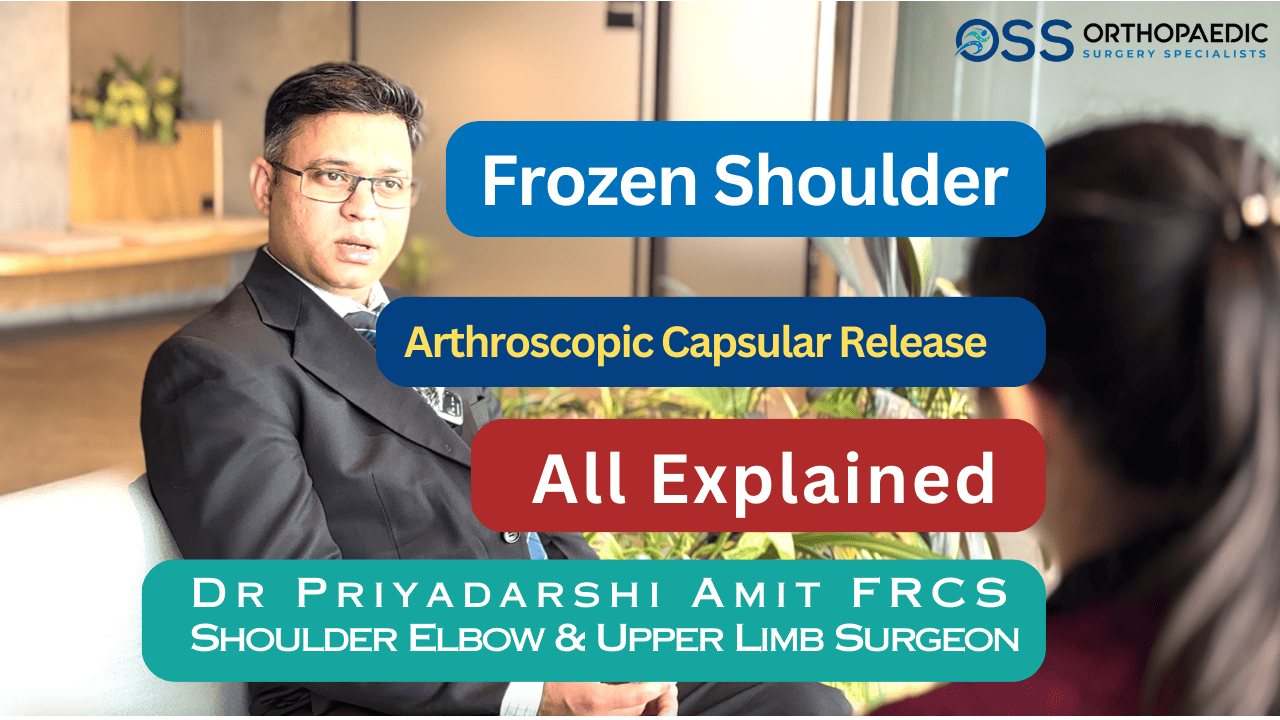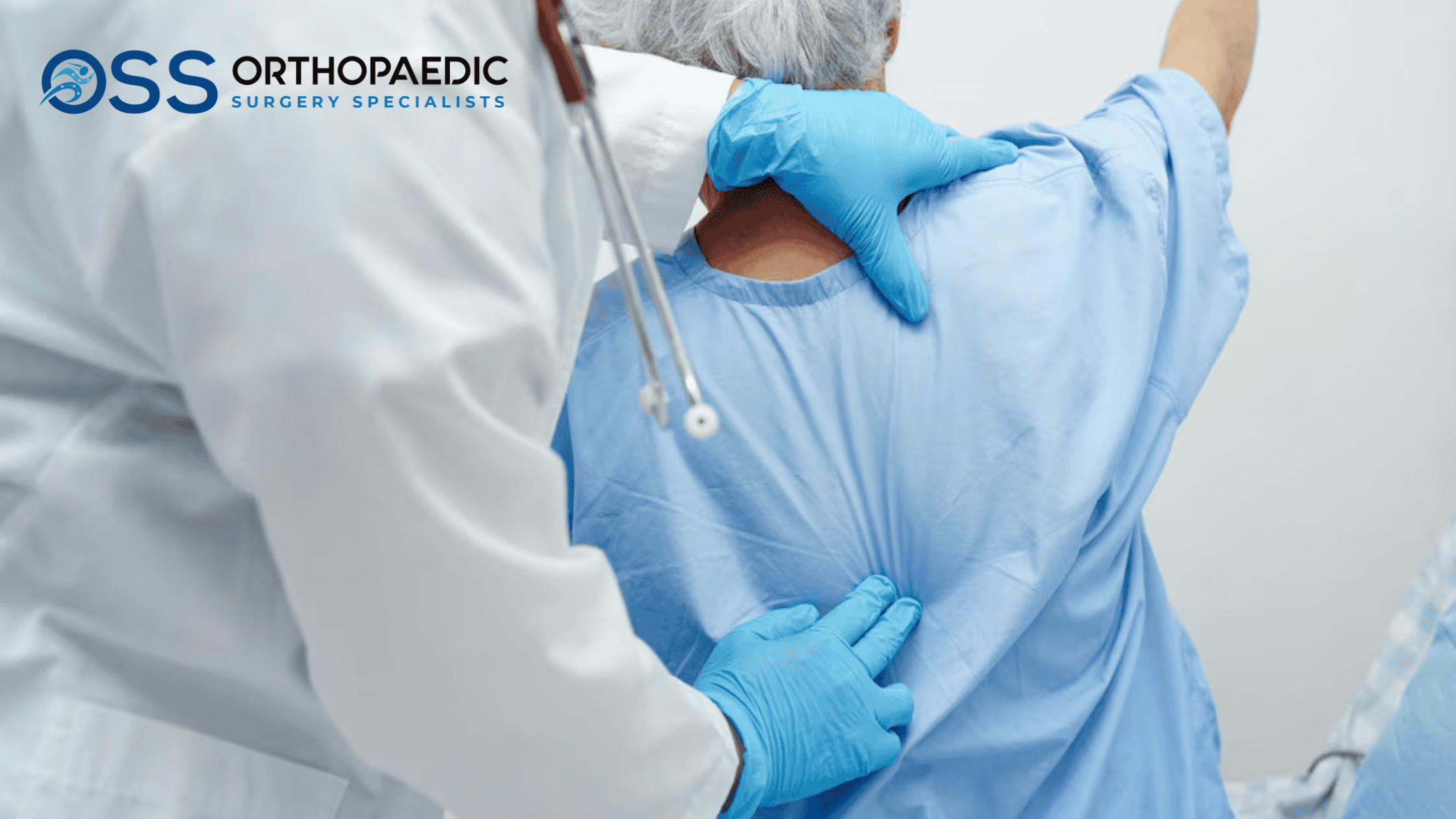
Posted by: Admin | 0 COMMENTS
Dr Priyadarshi Amit is currently one of the best orthopaedic surgeon in Delhi-NCR with exclusive practice in shoulder, elbow and upper limb surgery. He answers most commonly asked questions in the clinic about Frozen Shoulder.
I am having pain in my shoulder, is it Frozen Shoulder?
It is a myth, not every shoulder pain is due to Frozen Shoulder. There are multiple structures in the shoulder which can cause pain, such as, rotator cuff tendons (tendinitis or rotator cuff tear or impingement), biceps tendon (tendinitis or instability), ACJ (arthritis), joint surfaces (glenohumeral arthritis) or shoulder blade abnormality (STAM). Sometime, the pain can be coming down from the cervical spine. Frozen shoulder accounts for only a small proportion of these patients with shoulder pain.
What is Frozen Shoulder?
The shoulder joint is surrounded by a thin, soft layer called as capsule which is roughly 1-2 mm thick. In Frozen Shoulder, the capsule becomes thick and inflamed which causes pain and restricts movement in all the planes. Initially it is associated with severe pain, however later on pain reduces on its own but stiffness worsens.
What causes Frozen Shoulder?
Frozen Shoulder is commonly seen in association with Diabetes Mellitus, more common in female patient between 40-60 age groups. Shoulder may also freeze secondarily to other diseases in the shoulder such as rotator cuff tear or injury (Secondary Frozen Shoulder). In diabetic patients, it tends to be more painful and resistant to treatment.
How do you diagnose Frozen Shoulder?
Frozen Shoulder is mostly a clinical diagnosis. Your doctor will perform a thorough clinical examination at your visit. A plain radiograph (X ray) is necessary to rule out other causes of shoulder stiffness such as arthritis. Occasionally your doctor may advice scan (Ultrasound or MRI) to look for secondary causes of Frozen Shoulder.
How do you treat Frozen Shoulder?
Physiotherapy is the mainstay of treatment for Frozen Shoulder. The manual exercises involving range of movement (ROM) exercises are helpful in improving the stiffness. Your surgeon may give you a steroid injection into the joint to reduce inflammation. He or she may consider another minimally invasive procedure called as hydrodilatation to improve movements. If your shoulder is not responding to these measures, your surgeon will offer you a surgical procedure called as arthroscopic 360-degree capsular release.
What is hydrodilatation?
In hydrodilatation, the joint is numbed with local anaesthesia first, following which it is insufflated with around 40-50 ml of normal saline. The increased pressure in the joint results in rupture of tight capsule, hence resulting in increased movement and resolution of stiffness.
What does Arthroscopic 360-degree capsular release involve?
Arthroscopic 360-degree capsular release is indicated for Frozen Shoulder which has not responded to conservative measures. It is a keyhole surgery, performed under general anaesthesia. Through tiny holes in the skin, the camera and instruments are introduced in the joint. Subsequently, the tight and inflamed capsular tissue is cut with a special device called radiofrequency probe. Once the capsule is released, the shoulder is moved throughout the range. It’s a minimally invasive procedure which usually is completed within less than 30 minutes.
How long is the stay in the hospital?
You will be admitted on the day of surgery and can be discharged within few hours of surgery.
Is there any precaution after surgery?
You will be given an arm support for couple of days; however you will be encouraged to move the shoulder as soon as your pain allows.
How long do I need Physiotherapy after surgery?
On an average, patients need physiotherapy for about 6-8 weeks. However, in some cases, patients are painless and have regained full movements within one to two weeks.
When can I drive?
You can start driving in 4-6 weeks once you are comfortable.
When can I go back to work?
You can start light duties in 2-4 weeks once you are comfortable. However, it may take almost 6 weeks or bit longer to start heavy duties.
Is the surgery safe?
The surgery is relatively safe. Sometimes, we encounter persistent stiffness especially in patients with uncontrolled diabetes. The physical therapy must be aggressive right from the beginning to avoid this complication. Only very rarely, one would consider a revision capsular release.
If you have any questions regarding Frozen Shoulder or are suffering from shoulder pain, you can book appointment with Dr Priyadarshi Amit by dialling +918882554692.
Related Blogs








